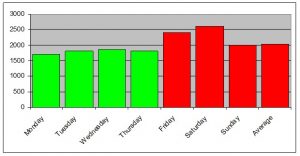Over 1 million American people have Type 2 diabetes and over 90% of that population is considered overweight. The top 3 major lifestyle risk factors associated with chronic disease, cancer and stroke are 1) tobacco use 2) lack of physical activity, and 3) poor dietary habits. Dietary habits and physical activity go hand in hand when it comes to reducing your risk of developing Type 2 diabetes. While there are many approaches to losing weight, 1/3 of Americans are on weight loss diets which claim to provide a “quick fix.” There are over 150,000 books related to weight loss on Amazon.com; however, creating a lifestyle change is the key to long term success. There is so much information out there between books and the internet- let’s establish some facts and focus on how physical activity impacts Type 2 diabetes and promotes weight loss.
Physical activity accounts for about 25-30% of the body’s total energy expenditure in a given day. (Physical activity includes walking around the office, climbing stairs at home, or standing up from a chair v. exercise which is regimented.) Before starting an exercise program, finding out your basal metabolism (BMR) will tell you how many calories your body is burning in a day. BMR is the energy expended to sustain basic life functions such as respiration, heart beat, nerve function and muscle tone. BMR accounts for about 50-70% of total energy expenditure. Once your BMR is calculated, we can then better understand and properly prescribe how intense your exercise program should be with consideration of your BMR.
Maintaining healthy body weight by balancing caloric intake with energy expenditure is typically the most challenging part of weight loss. Too much exercise with too little nutrient dense foods can cause you to lose vital fluids and micronutrients. Too little exercise with too much food can lead to weight gain. Remember 2 things: 1) healthy weight loss is 1-2 lbs per week and 2) you must expend and extra 3,500 calories to lose 1lb. For example, decrease your caloric intake by 500 calories a day without any exercise you will lose at 1 pound over the course of seven days. Walking 1 mile is about 100 calories expended. An extra 100 calories burned a few times each week paired with a 500 calorie deficit and you will reach your goal of 1-2 pounds a week. The key is setting reasonable goals and starting with small changes to make big differences.
It’s important not to just focus on weight loss but overall health. Physical activity of at least 30 minutes a day can lower blood pressure, lipid levels, and blood glucose. The main focus is creating sustainable lifestyle changes. Focus less on the weight loss and more on overall improvements in fitness levels. Remember, fit people are healthier than unfit people of the same body composition. Being active much is healthier than being sedentary.


